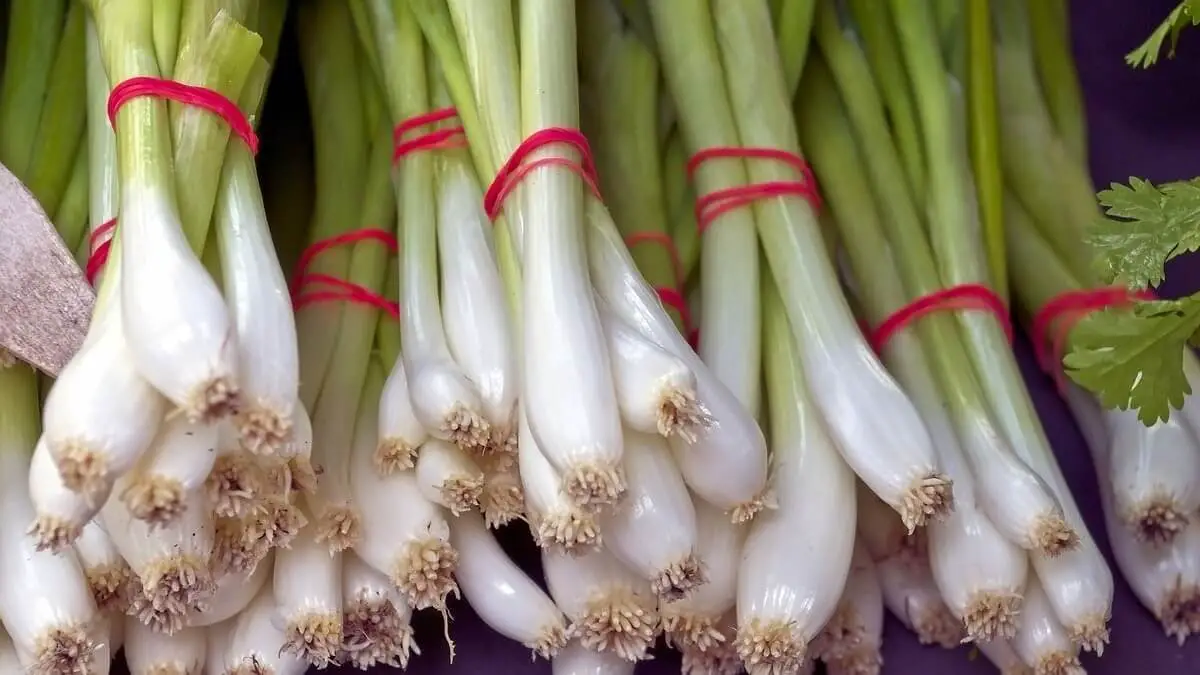All about Bunching Onions
The Bunching Onions (Allium fistulosum) also have other common names including Japanese bunching onions and spring onions. Most botanists consider them to be scallion species. Naturally, bunching onion is a perennial plant.
This article mostly focuses on description, growing cultivation and uses of bunching onions.
Bunching Onions and its related common onion, Allium cepa has similar taste and odor. Tree Onion is a hybrid cross of them. However, Bunching Onions (Allium fistulosum) do not form bulbs. They have scapes and hollow leaves.
Comparatively, the green foliage of Allium fistulosum has superior flavor than most of its related varieties.
Allium fistulosum’s larger varieties resemble leek (a vegetable). Its smaller varieties resemble chives (flowering plants). Generally, the Allium fistulosum grows much faster. You can maintain them easily and harvest annually. After that, you can reseed them in succession.
US grocery stores sell scallions that are mostly early bulbing onions
Table of Contents
History of Bunching Onions
One of the familiar names of bunching Onions is Welsh onions. Here, the word “Welsh” resembles “foreign”, in some olden English literature. Actually, these onions have no particular connection with Wales or its culinary.
These onions have their native roots in china. Some Chinese records also indicate the Human consumption of these onions since 200BC. Some records show, these onions reached japan market during the early 19th century. From there, they spread across and Europe. Finally, they catered to North American consumers.
Bunching Onions – Propagation
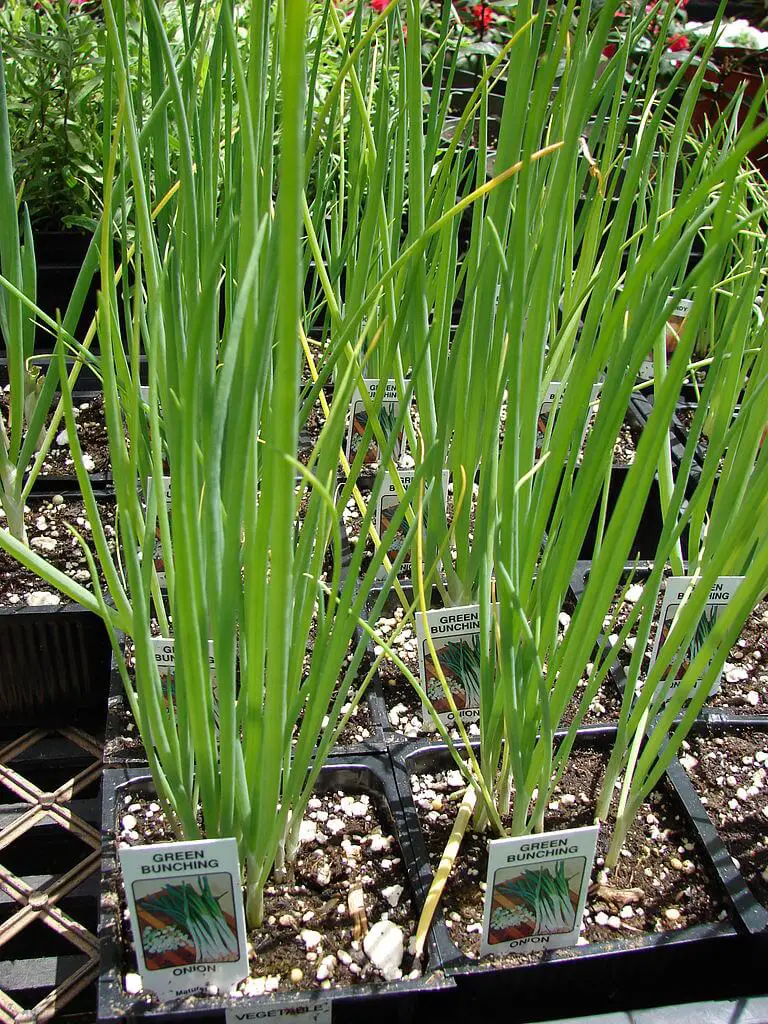
Photo by Forest & Kim Starr (Wikimedia Commons) (CC BY 3.0)
You can grow this plant easily from seeds or by divisions.
Make sure to planting area is sunny or partially shaded. Also, treat the soil with good compost or manure before planting. This ensures the healthy growth of the plant.
Seeds
For summer harvests, start planting in early spring. For fall or spring, harvests start planting in late summer.
You can sow the seeds 1/4 – 1/2 inch deeper in well-drained soil, in rows. Make sure the distance between each seed is at least 1/4 inches.
Alternatively, you can plant the seeds indoors in a medium. Do this 5-6 weeks before the last frost date. Maintain the soil moisture until the germination starts. Normally, this will take about 7-10 days. Maintain average indoor temperature about 59 to 68°F throughout this process.
Once the plants grow 8-18 inches tall, transplant them in your garden. Make sure the distance between each plant is at least a few meters.
Before transplanting, it is advisable to dip the root bottoms in a good quality liquid fertilizer
Division
Normally, Bunching Onions grow energetically. They will have established strong roots upon maturity. You can divide the roots into several sections and replant them in your garden. If you have the excess quantity, you can also sell them commercially.
Normally, it is advisable to divide plants in spring. In this time, they tend to grow fresh and energetic. Make sure to water them as needed.
Bunching Onions – Maintenance
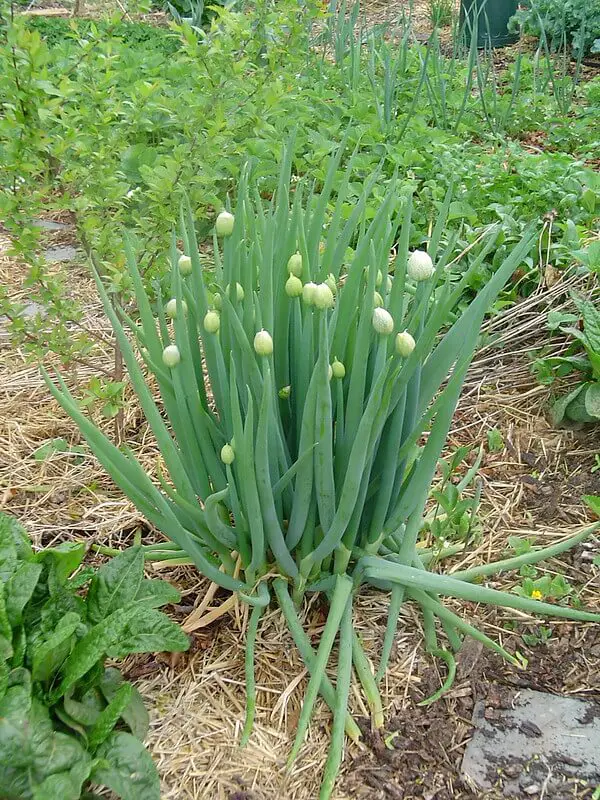
Photo by Eric Toensmeier (CC BY 2.0)
Generally, Allium fistulosum has resilient characteristics naturally. So, you can expect them to grow in almost any soil conditions. They can even tolerate droughts.
However, you will get a superior-high-quality crop upon maintaining it ideally. Make sure the planting area receives full sunlight. Add nutrients to the soil periodically. Water it regularly. But avoid flooding. Also, apply comfrey tea or fish fertilizer at least once a month.
You can also easily make homemade comfrey tea fertilizer. Just cut off some comfrey leave bunches. Immerse them in a large (5 gallons) bucket of water for 2-3 days. Your “tea” is ready for plants. Still, we recommend you to buy from the shops. Because those teas will have essential nutrients added to them, in addition to simple comfrey leaves juice.
We also recommend you to cover the plants surrounding areas with a thick film of good quality mulch. This will maintain the soil moisture and also will minimize weeds.
To remove the weeds completely, use a good quality weed wacker.
You can also prepare the plants to deal with frosty winters. Cover much over the Allium fistulosum plants in the fall itself. This will lead to earlier cropping and also protect the plants from winter colds.
If you prefer continuous supply, try succession planting every month! However, success depends on the climatic conditions and soil where you live.
As the plants grow, hill them with soil. In this way, the leaves force grows higher. As a result, you can harvest longer stalks and longer edible leaves.
Pests
Generally, bunching onions can resist infections. In Fact, Gardeners plant alliums to prevent herbivores like rabbits and other insects.
In spite of these striking capabilities of these plants, there are a few diseases and pests that can bother them occasionally.
Allium Leaf Miners
When these flies encounter allium-family plant leaves, they lay eggs inside them. After that, they eat the plant matter along their way to the roots down. As a result, the leaves develop little white spots along with their tips. The Bactria and fungus rotten the resultant wounds. Finally, the plant ruins.
Simply speaking, if miner flies’ burrows down into the plant, you can do almost nothing. In fact, this is a newly arrived pest in the US region. In 2015, gardeners found the first infestation of this kind at a garden in the Western Hemisphere, Lancaster County, Pennsylvania. Researchers are still studying these pests.
You can avoid this infestation by timing crops as suggested by the integrated pest management program. Also, you can avoid these kinds of situations using row covers.
Thrips
These are tiny insects that infect plants. They usually make blotchy streaks on plants. This activity in turn causes leaf deformity. Finally, the plant weakens and becomes susceptible to other pests and diseases.
Using a good garden water jet, hose off the plants every day. You can also do insecticidal soap coating periodically. This is the best way to deal with thrips and most of the other insects.
Diseases
White Rot
This is a common soil-borne fungus. It can affect all plants including those in the allium family. Normally, this fungus forms as a white mold at the roots. When the intensity of fungus is very high, it can ruin the plants as a whole.
Crop rotation is a good practice to avoid these types of Fungai. However, white rot Fungai can recur as its lifetime inside the soil is between 8-20 years.
It is a best practice to inspect the seeds before planting, to avoid these kinds of Fungai. So, we always recommend you to purchase good quality seeds.
Mildews
Mildews usually cause fuzzy growth on infected leaves. As a result, the leaves turn yellowish or brownish and finally collapse as a whole.
It is advisable to use good quality seeds from reputed vendors, planting in well-draining soil, use the rotation of crops Etc, to avoid these types of diseases.
Botrytis Leaf Blight
This is a common leaf disease. It generally creates small white spots on leaf surfaces. The leaf tips wilt and finally dies. This results in the ruining of the plant as a whole.
If you encounter such a situation, destroy all the infected plants immediately.
As a preventive measure, always plant the seeds in well-drained soil. Waterlogging always causes fungal diseases. If possible, always apply water to the plant base in the morning. This gives time for foliage to dry before the cool evening temperatures arrive.
Limit the irrigation activities and fertilizer applications in the late season. Apply good quality fungicide, if you see initial signs of fungus or if you encounter wet weather. Continue repeating this process at least once every week.
Always keep the weeds under control. After harvest, Rake the whole area and remove all the debris as quickly as possible.
Practice rotation of crops at least once in three years. Make sure there are no allium plants in the field during these “off” years.
Bunching Onions – Harvesting
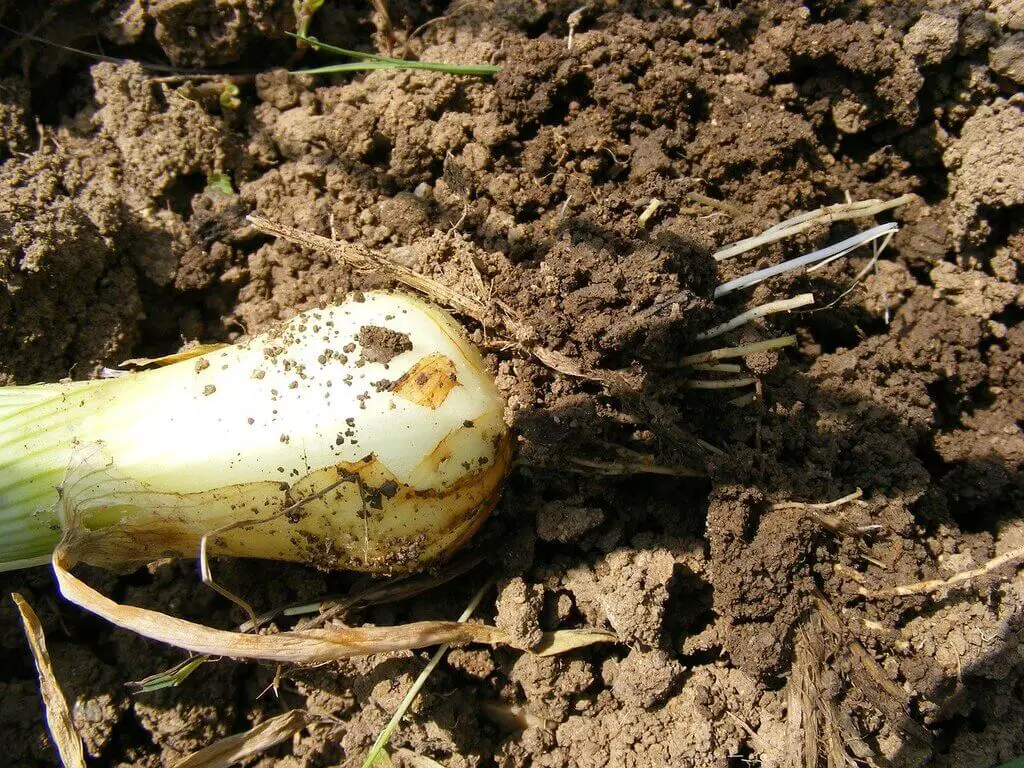
There are two methods to harvest these plants. In the first method, you can pull off the entire plant. After that, just wash them, eat raw as green onions, or use in your cuisines. In the case of mass harvest, you can also sell them commercially. They have a good sizeable market.
In this method, you have to propagate the plants every time and wait till they mature. This usually takes about 4-5 months’ time period.
In the second method, just snip off the leaves from the plant as needed. Use good quality snippers to ease your job. This can be done multiple times throughout the entire season. The leaves tend to grow back quickly. In this method, these hardy perennial plants produce leaves and flowers year after year repeatedly, with minimal maintenance.
If you live in warm areas, you can harvest the crop throughout the year. However, do not start to harvest until mid-summer during the first growth. Also, carefully avoid over-harvesting during the first growth. This facilitates the young plants to develop deeper, stronger roots.
Make sure to remove the flowers from the plants. You can use these edible flowers for cooking. In case, if you want to save seeds, then allow the flowers to grow in the plant
Bunching Onions – Preservation
Normally, you can store bunching onions in your refrigerator’s crisper drawer up to 10 days. If you intend to store longer, you can easily use freezing or drying techniques.
Freezing Method
Wash the bunching onions thoroughly under running water. Lay them on a dry cloth or paper for drying. Chop them with sharp knives. The thickness of the resulting rings depends on your desire and chopping methods.
Generally, these plants do not require blanch or any other additions before storing them in a freezer. You can directly store them in freezer containers. Also, you can directly pick them a handful and use it for cooking. Everybody likes delicious food!
Drying Method
If you have an abundant crop, possibly this the best method for preserving and storing. Normally, dried crops require very little storage space compared to non-dried variants. This plant dries quickly and you can also store it up for future years.
As usual, wash this plant using running water thoroughly. Chop it with clean a sharp clean knife to the thickness you desire. Dry them using dehydrator in the low-temperature setting until the moisture evaporates fully.
Usually, these plants dry quickly. So, keep a watch on the equipment.
After drying, store them in a cool, dark place in preferably in airtight containers. In this way, you can preserve them for years.
Uses of Bunching Onions
Enthusiasts also grow them in a bunch of ornamental plants. You can eat Allium fistulosum fresh from the garden. You can also use them in sandwich fillings, stir-fries, and sprinkle in soups.
These plants can produce tiny white roots and tasty green stems that catering your kitchen, almost every year.
Bunching onions develop hollow green stems that are thick and round. Unique greenish-white flowers bloom in summer. These flowers are also edible with a similar flavor.
Medicine
Chinese traditional medicines use Allium fistulosum to cure many diseases. They use it to prevent cardiovascular disorders, improve metabolism fight colds, and infections in respiratory systems.
Herbalists use poultice from scallions for treating skin infections or skin draining sores. They wrap it on the infected areas for a few hours or days, depending on the infection.
The Allium fistulosum plant itself can repel certain types of insects including moles and termites. Its juice has aphid or moth repellent characteristics. So, you can use this plant to protect your garden against some pests and diseases.
Culinary use
The bunching onions serve as an important ingredient in Asian cuisine, particularly in East and Southeast Asia. Japan, Korea, and china use this plant in their traditional cuisines. Hence, this plant has a nickname called Japanese bunching onion. The western world uses bunching onions mostly as salad onions or scallion.
Jamaica
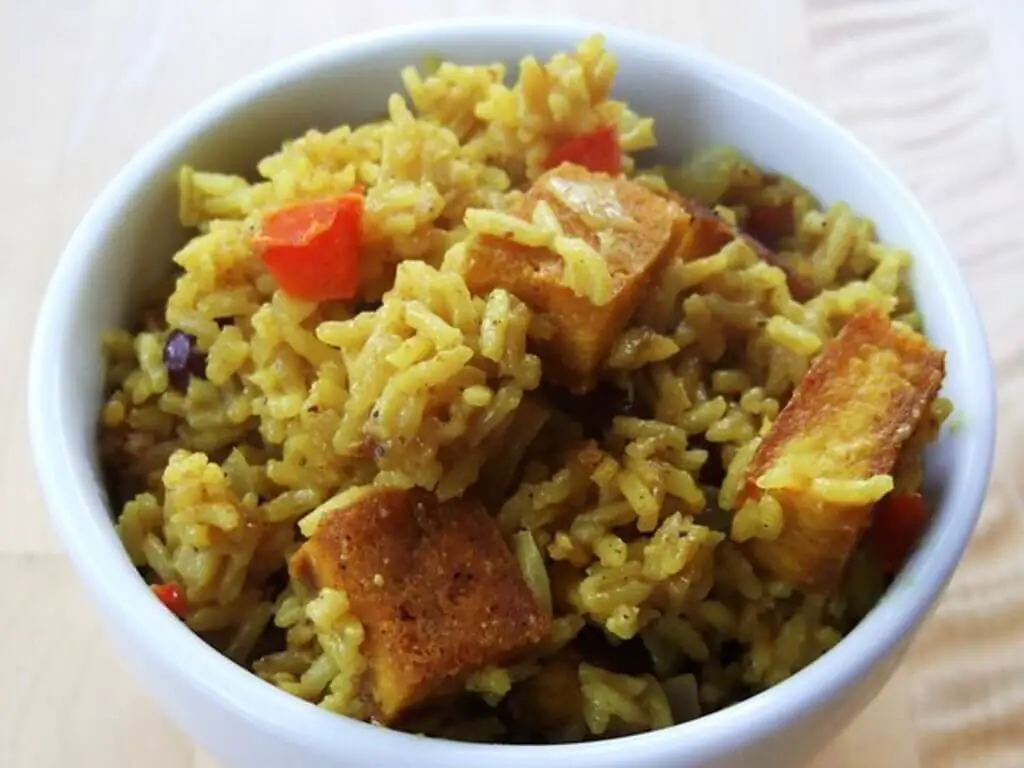
Photo by Bryan Ochalla (CC BY-SA 2.0)
Jamaicans call Allium fistulosum as escallion. This name is mostly a derived variant of scallion. Enthusiasts attribute this name to most genus Allium plants.
Jamaicans use escallion in combination with scotch bonnet pepper, allspice (pimenta), garlic, and thyme. Escallion recipes sometimes propose to use a substitute (usually leek) in salads. Jamaicans also add escallion to most of their dried spice mix. They market it commercially.
Japan

Photo by stu_spivack (Wikimedia Commons) (CC BY-SA 2.0)
In the Japanese language, Naganegi means “long onion”. They call bunching onions as “ negi”. They also refer this name to other genus Allium plants.
Koreans call Allium fistulosum and Allium × proliferum as “Pa”(scallion). They call common onions as “yangpa”( Western scallion). They also call larger varieties “daepa” (big scallion) and thinner varieties as “silpa” (thread scallion).
Common onions entered the east Asian market in the 19th century. But Allium fistulosum dominated the market with its popularity and characteristics.
Japanese use them in negimaki (beef and scallion rolls), miso soup, and other local dishes. Mostly, they slice the plant and use it as a garnish particularly with teriyaki (a snack also called as octopus balls)
Korea

Photo by Hyeon-Jeong Suk (Wikimedia Commons) (CC BY 2.0)
Koreans use silpa and daepa as a common spice in most of the Korean cuisines. They use silpa’s green part as garnish and white part as a flavour base for infused oils and various broths (A kind of savory liquid having vegetables, bones, meat, etc., simmered)
Koreans use daepa in various dishes including pa-mandu (scallion dumplings), padak (scallion chicken), pa-sanjeok (skewered beef, and scallions), and pa-jangajji (pickled scallions).
They also use silpa in various dishes including pa-jangguk (scallion beef-broth soup), pa-namul (seasoned scallions), and pa-ganghoe (parboiled scallion rolls). Particularly in pa-ganghoe (parboiled scallion rolls), they use silpa as a ribbon that holds other important ingredients.
Russia
Russians use bunching onions for adding a flavour of green leaves to their native salads.
Top Posts
Growing Broccolini in Gardens
All about Elaichi Tree

